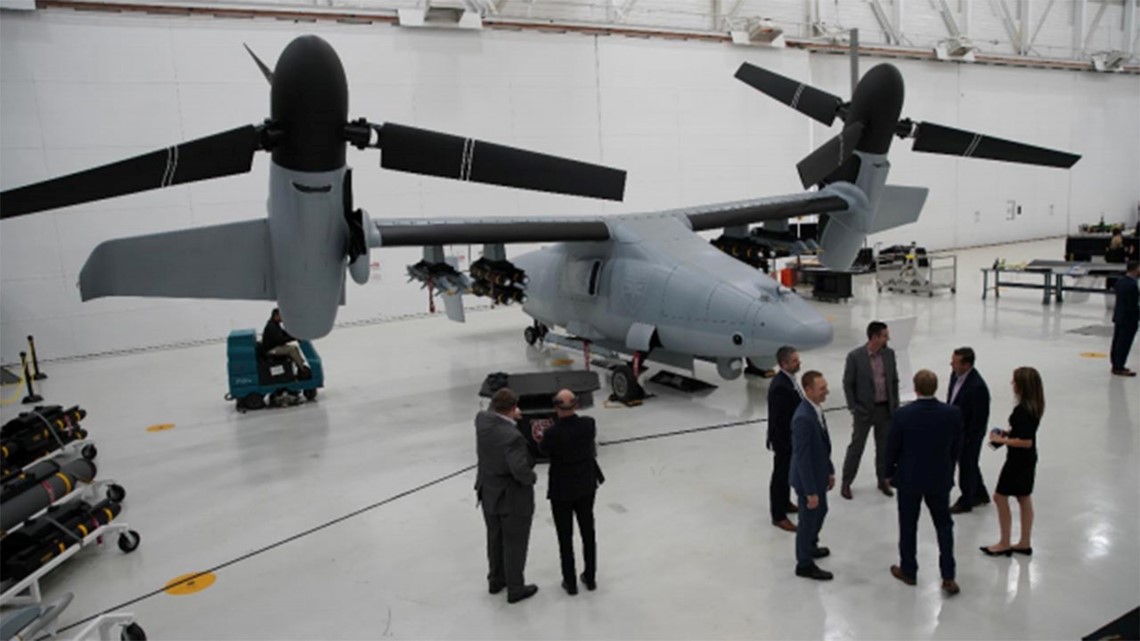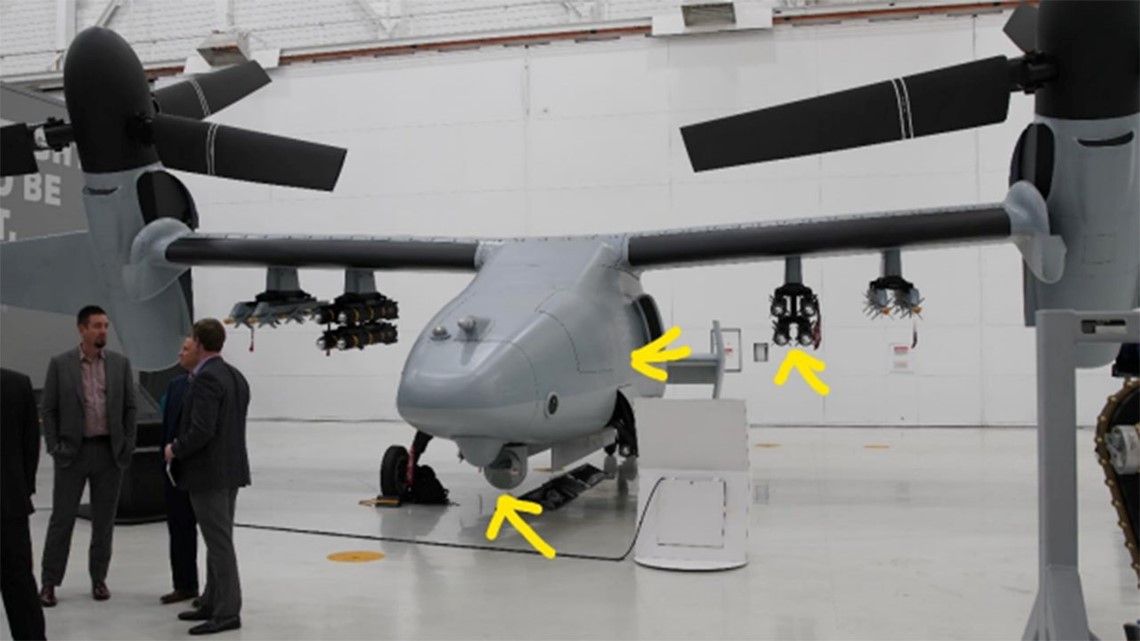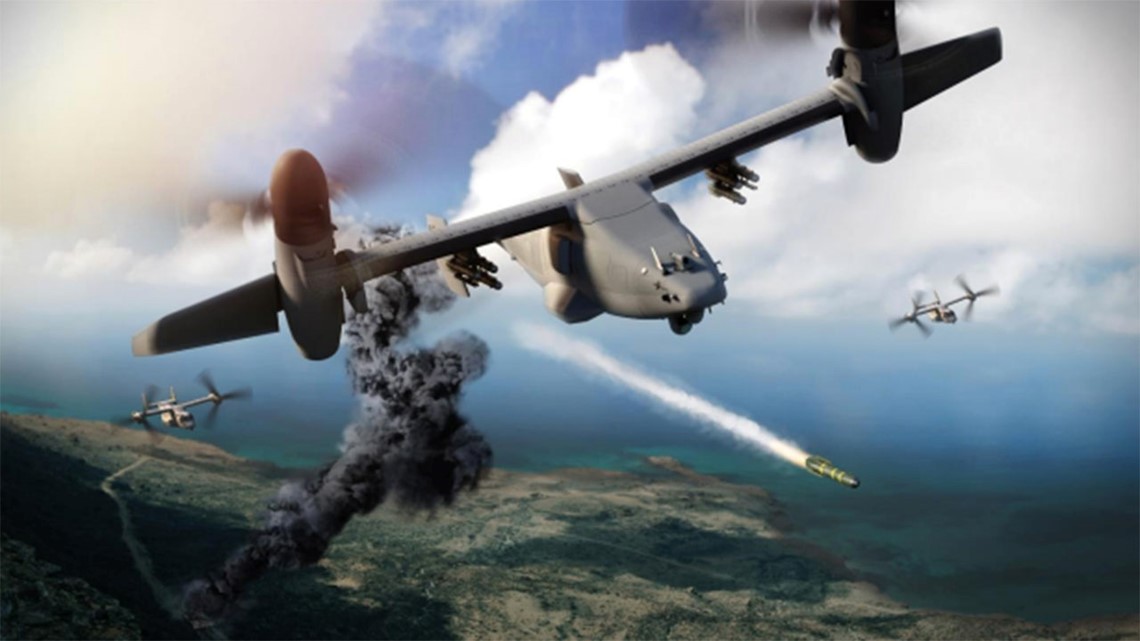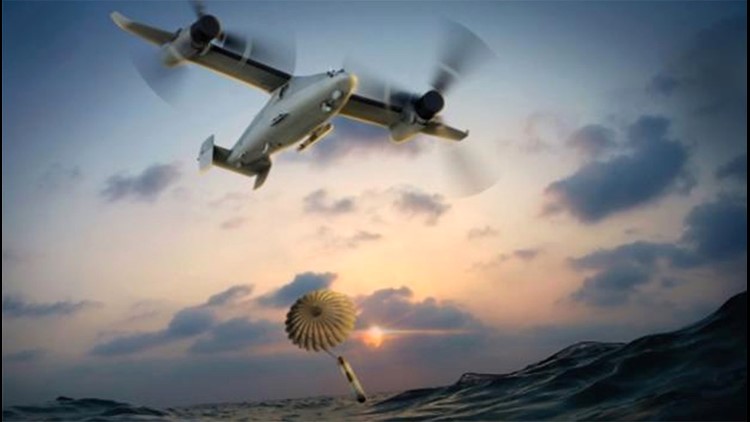FORT WORTH, Texas — If you live in Reykjavik, Iceland, it’s no big deal to pick up the phone, place an order and not long after a small drone carrying sushi, ribs or laundry detergent will be hovering over your house.
At Bell in Fort Worth, engineers are working on a drone with a more serious purpose. The formidable-looking Bell V-247 Vigilant is a concept that would use the company’s tilt-rotor technology in an unmanned format.


Bell anticipates a need for a reconnaissance drone that can operate without a runway by the middle of the next decade. The first customer would be the U.S. Marines, who already fly the V-22 Osprey tilt-rotor, which has been in service for nearly 15 years.
“I think the V-22 has been a very successful product,” said John Jackson, a retired U.S. Navy captain.
Jackson teaches at the Naval War College and is the author of "One Nation Under Drones," which explores the past and future of military and civilian unmanned aircraft.
“I think it’s got a leg up on the competition,” Jackson said of Bell.
The initial mission would be as a sensor platform, often described as “eyes in the sky,” which would detect incoming missile attacks and be a communication mode to defend against them. Bell said the aircraft would have the capability to stay in the air for 12 hours.
Beyond that, it could carry weapons, perform anti-submarine operations, or even tote a swarm of smaller drones in its belly. On most missions it would be controlled autonomously, meaning somewhere, someone working a joystick while watching a TV monitor would be making the Vigilant, well, vigilant.
“There are other unmanned vehicles out there,” said Jason Hurst, program manager for V-247. “But they need runways. Ours doesn’t.”
The platform could be a destroyer at sea or a Marine unit on land. Bell has been working on the Vigilant, which hasn’t flown yet, for three years. The U.S. Marines are expected to formally solicit ideas for a vertical takeoff, large payload drone by this summer. Winning the contract -- likely to be worth hundreds of millions -- would mean jobs for Fort Worth and possibly Amarillo, where the V-22 is built.


Once the need for the plane is announced, others can be expected to join the competition.
“It still comes down to the battle of the best ideas,” said Jackson of the Naval War College. “Bell has a leg up right now. And they have a fair shot to be winner.”







